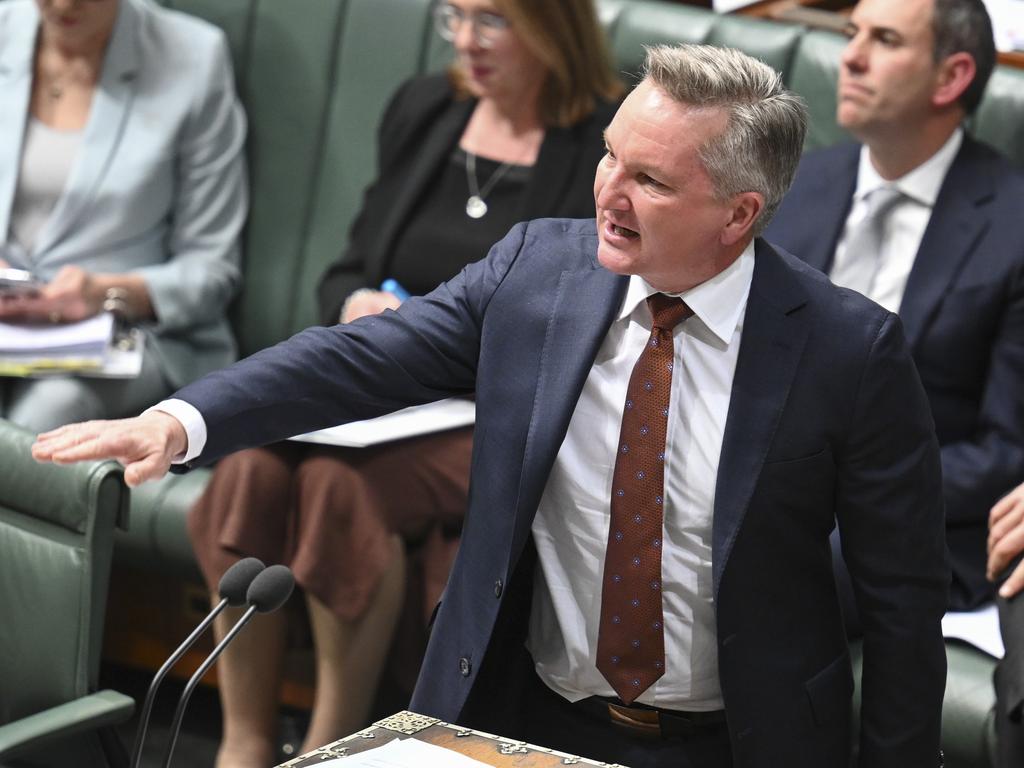Renewable energy capacity on course to hit 7GW this year, as large-scale projects nearly twice what was previously expected
The outlook for new wind and solar generation this year has near doubled, as large-scale zero emission projects materialise and households and businesses bolt on rooftop solar.
Australia is on course to add 7GW of new renewable energy capacity this year, the Clean Energy Regulator has said, as a near doubling in expected large-scale zero emission projects and continued growth in households and businesses bolting on rooftop solar provides a boost to Labor’s claim it can deliver its transition plan.
The federal Labor government is under mounting pressure to deliver its signature transition policy of having renewable energy generate 82 per cent of the country’s electricity by 2030 and the outlook is a major boost for Prime Minister Anthony Albanese, though it will exacerbate concerns about what will support the rapid rise of wind and solar.
The Clean Energy Regulator said 1.5GW of large-scale renewable power station capacity was approved during the first six months of the year. A further 2.5GW of applications were under assessment at the end of June 30, a near doubling what was previously anticipated.
As a result, the Clean Energy Regulator expects renewable energy will provide around 42 per cent of the country’s power this year, a steady increase though critics insist the pace underscores their scepticism about the prospects of Australia meeting 2030 targets.
Federal Energy Minister Chris Bowen hailed the progress, saying it showed there was growing impetus behind the transition.
“This latest report shows the Albanese government’s Reliable Renewables Plan is on track and building momentum, in contrast Peter Dutton wants to stop renewable investment, tear up contracts for new renewable and transmission projects, and deliver expensive nuclear reactors in two decades time,” said Mr Bowen.
The Clean Energy Regulator also hints of increased progress. The regulator also said there has been an up-tick in final investment decisions made in new renewable energy projects. Some 1.8GW of projects have received commitments from developers during the first six months of 2024, up on 1.6GW of projects that secured financial investment decisions throughout 2023.
So-called behind the meter capacity was a major driver, however, which shows Australian households driving significant progress. Australian households and businesses are rapidly bolted on solar panels after electricity bills spiked by more than 20 per cent for two consecutive years.
The increase will be cheered by those who support Australia’s energy transition though critics will highlight what they insist is rising vulnerabilities.
Increased renewable energy generation will send wholesale electricity prices more frequently into negative territory, a boon to households and businesses eventually. But coal power stations which are typically inflexible and produce electricity throughout the day, will be under ever greater economic pressure.
The Australian Energy Market Operator expects Australia’s fleet of coal power stations to have been mothballed by 2037, but Australia’s energy industry is increasingly alarmed by what will prop up the country’s electricity grid during so-called renewable energy droughts.
Batteries, which developers are pushing amid Australia’s wild wholesale electricity price swings, are a solution only for a few hours and Australia’s east coast is on course to experience significant supply shortfalls as soon as 2026.
The outlook has intensified pressure on the Labor government to fast-track new developments. But the Albanese government has insisted it will not be rushed, a stance that Australia’s gas industry insists is indicative of Labor’s support for the fuel source.
Gas dependent states like Victoria are likely going to have to import LNG cargoes to offset the shortfall, which energy industry sources insist will see an increase in gas prices. LNG importers such Andrew Forrest deny shipping in supplies will result in increased supplies.
Without gas, however, Australia’s energy grid will be susceptible to price rises and it will strain the capacity of the country’s market operator to keep electricity supplies secure – a key pillar of the opposition’s argument that Australia must embrace nuclear energy.
The Coalition has proposed building seven new nuclear power stations, which it said will provide baseload power to prop up renewables.
The first of the proposed nuclear power stations is not expected to be ready until 2037, however, which is likely to require the Coalition to extend the lifespan of coal power stations.
NSW and Victoria have been forced to strike deals to ensure their largest coal power stations remain open but nearly all bar generators in Queensland will be beyond their technical lifespan by 2037 – stoking concern from Australia’s energy industry.
The Coalition must also win a public mandate for its energy plan, which is likely to be dependent on the release of its costings, though there are signs of growing support from the electorate.




To join the conversation, please log in. Don't have an account? Register
Join the conversation, you are commenting as Logout